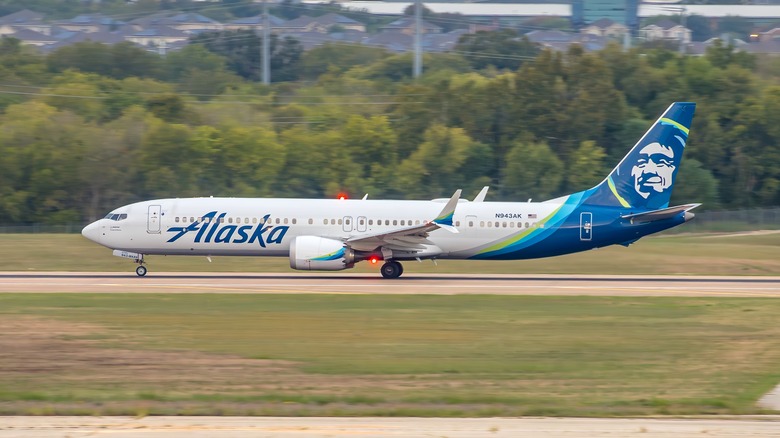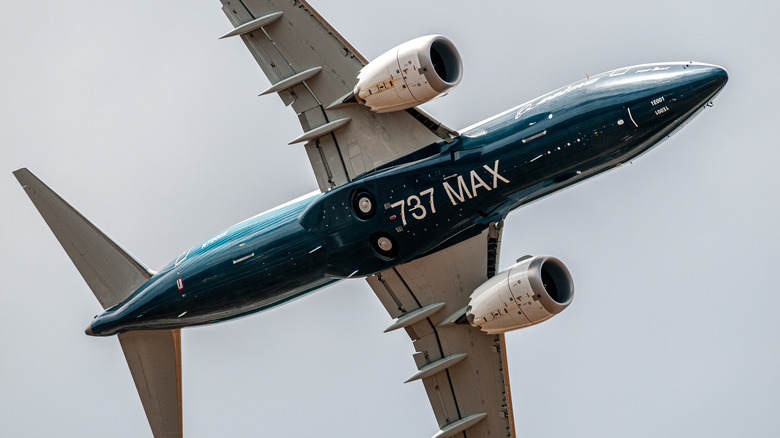Boeing's Disastrous 737 MAX Week Just Got Even Worse After Door Depressurization Incident
Boeing finds itself in hot water over its 737 MAX aircraft once again after an Alaska Airlines flight experienced rapid depressurization on Friday, leading the FAA to ground 737 MAX 9 airplanes. Following that harrowing flight, which saw viral video clips shared to social media in which the plug door of the airplane had apparently ripped off from the aircraft while in flight, inspections conducted by United Airlines turned up worse news. According to the airline, at least five of its 737 MAX 9 fleet were found to have loose bolts and "other parts," as reported by aviation industry insider The Air Current.
In a statement, United officials said, "Since we began preliminary inspections on Saturday, we have found instances that appear to relate to installation issues in the door plug — for example, bolts that needed additional tightening." Moreover, these issues were reportedly not uniform, with each of the five aircraft having different loose parts. On one, the upper forward guide fitting on a plug was loose, while on another, the bolts connecting the lower hinge of the plug were incorrectly installed.
The plug door which plummeted from Friday's Alaska Airlines flight was recovered Sunday from a residential backyard in Portland, Oregon. According to NBC, The National Transportation Safety Board will take the door to a Washington D.C. lab for analysis.
The harrowing history of the 737 MAX highlights concerns over safety regulations
Boeing's trouble with the 737 MAX did not begin this week. Concerns and issues have plagued the fourth-generation 737 since at least October 2018, when all 189 people onboard a Lion Air MAX were killed when the aircraft crashed over Indonesia. Then, only five months later in March 2019, another 157 people died aboard an Ethiopian Airlines flight that crashed shortly after takeoff. Some Boeing employees were reported to have known about issues with the aircraft before the crashes.
Further, Boeing has drawn strong criticism for its handling of the ill-fated aircraft, with critics vocally lambasting the aerospace giant for perceived foot-dragging and possibly attempting to skirt safety regulations. Although the company halted production of the 737 MAX in January 2020, resuming at a lower production scale in May of that year, problems continued to be discovered and incidents continued to pile up. In April 2021, electrical issues caused another grounding and a halt in sales of the aircraft.
Nevertheless, the Associated Press reports that Boeing requested exemptions from federal regulations last month, seeking to carve the 737 MAX out of a safety standard meant to stop engine housings from overheating and coming apart from the aircraft mid-flight. The issue is related to an anti-ice system, which can only be used safely for five minutes. In November 2019, an engine fan blade failed after that anti-ice system caused inlets to overheat, and a part of the engine housing killed a woman sitting near a window when it struck her. Boeing is instructing pilots of the 737 MAX 8 and 9 to limit use of the system to five minutes, but a spokesman for American Airlines pilots says that's not a sufficient safeguard.

